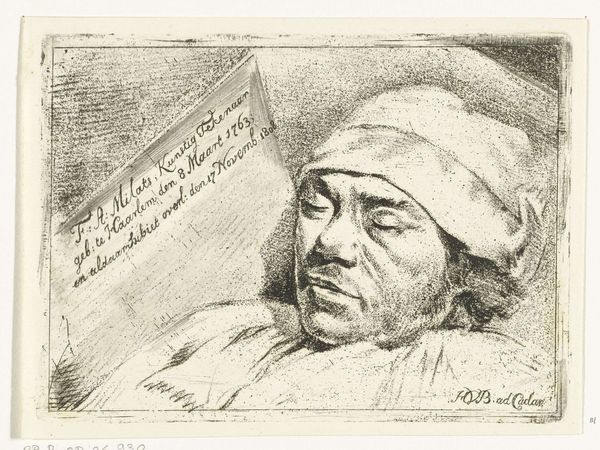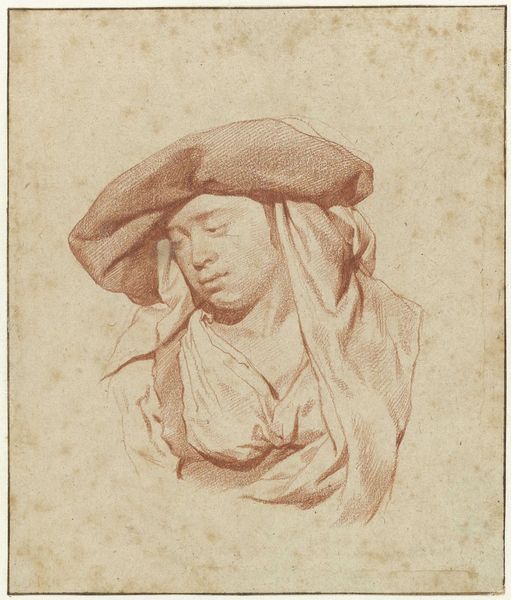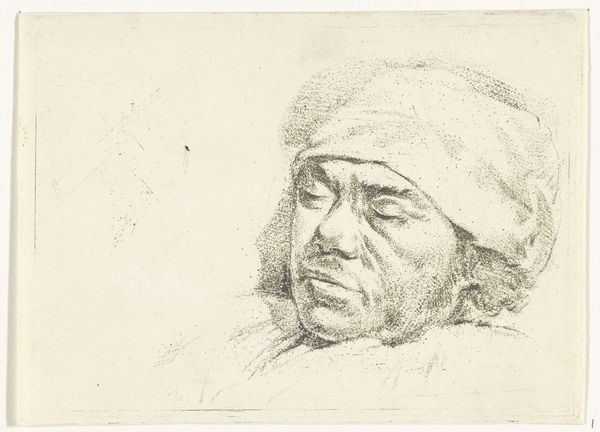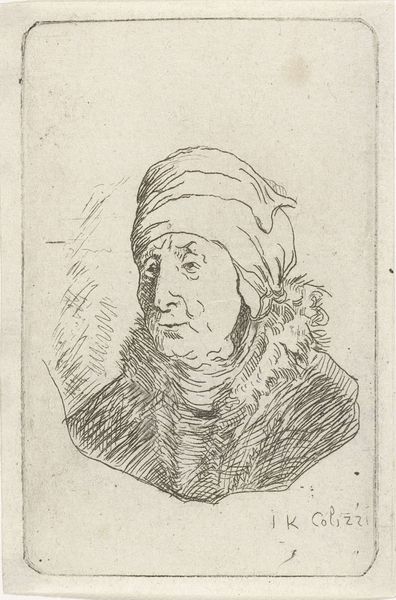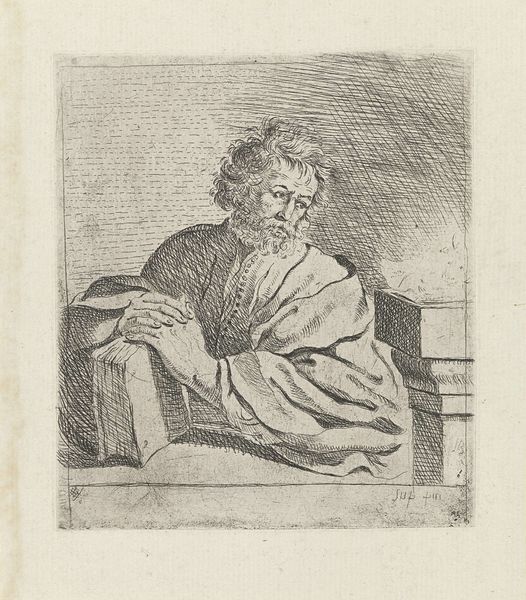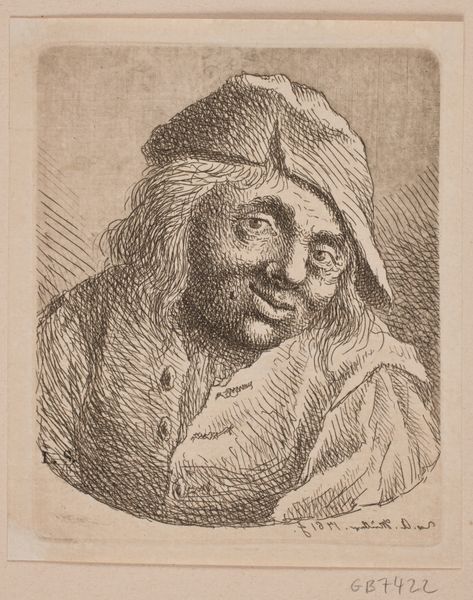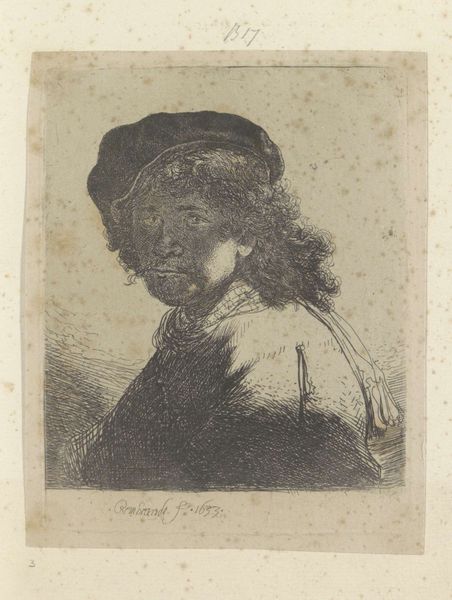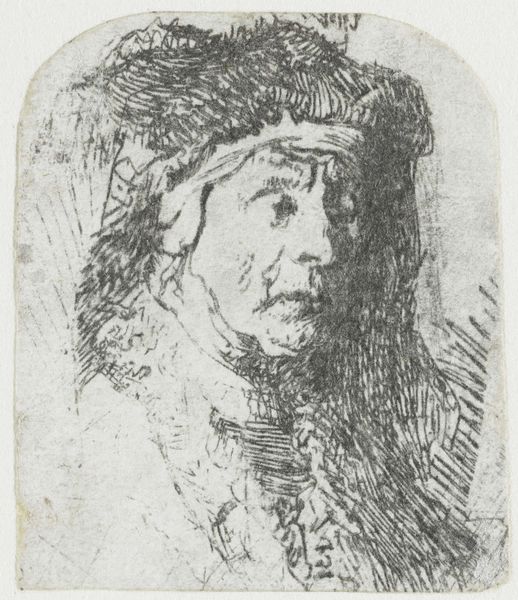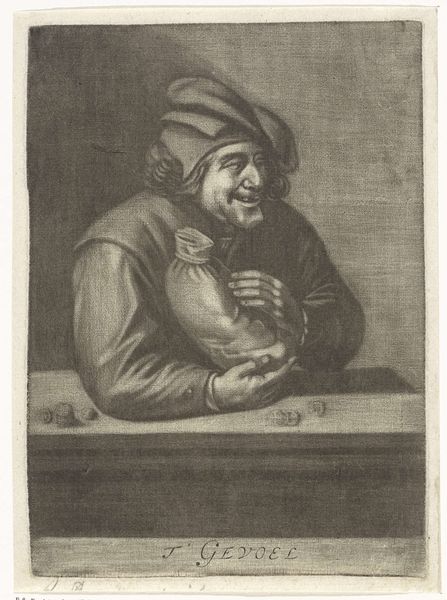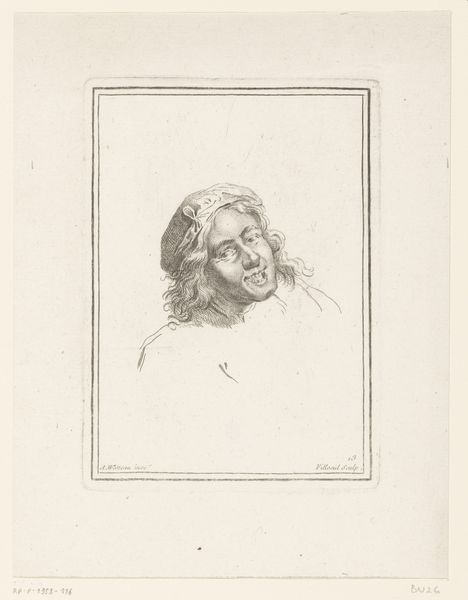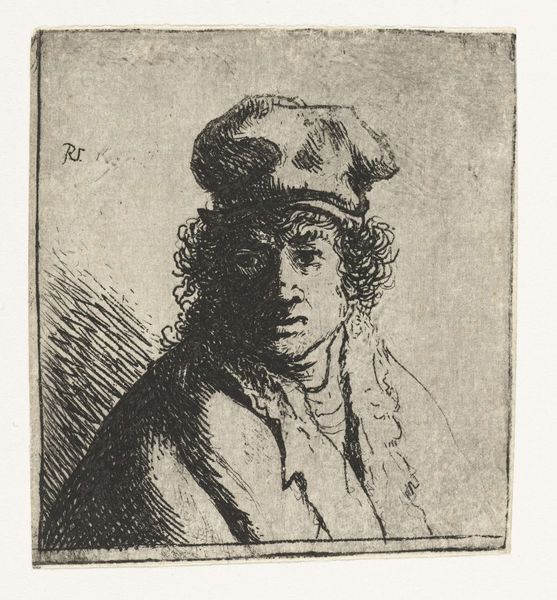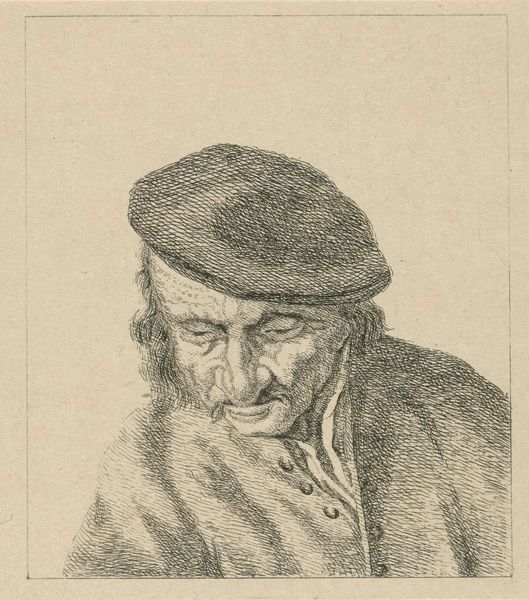
Portret van de schilder Franciscus Andreas Milatz op zijn doodsbed c. 1808 - 1810
0:00
0:00
drawing, pencil
#
portrait
#
pencil drawn
#
drawing
#
self-portrait
#
pencil drawing
#
romanticism
#
pencil
#
portrait drawing
Dimensions: height 114 mm, width 153 mm
Copyright: Rijks Museum: Open Domain
Curator: This is Hermanus van Brussel's "Portret van de schilder Franciscus Andreas Milatz op zijn doodsbed," created circa 1808-1810 using pencil. Editor: It's strikingly intimate, almost invasive. There’s a certain stillness, of course, but also an undeniable sense of sorrow hanging over the image. Curator: Observe the cross-hatching. Van Brussel employs subtle tonal gradations, effectively capturing the texture of skin and the softness of the pillow. The composition itself is elegantly simple, directing focus squarely on the face. Editor: And the sitter is another artist – Milatz – so we can perhaps interpret it as an expression of solidarity amongst artists, even in death. Were there strong artistic communities or organizations that defined artists’ relationships in that time and place? Curator: Possibly, but primarily, it speaks to the Romantic fascination with mortality. The attention to detail is almost clinical in its precision, reminiscent of contemporary anatomical drawings. Note how line is exploited, particularly around the eyes, almost suggesting their sunken quality. Editor: True, but in Romanticism, death isn’t merely an ending, it’s a transformative state. A lens through which we examine life, society, and perhaps even artistic legacies. The act of portraying Milatz in death transforms him into a symbol—not just a deceased painter, but a representation of artistic life and death. What might it mean that van Brussel chose to picture Milatz on his deathbed rather than memorializing him through painting his portrait in a heroic pose or engaged in the act of painting? Curator: You might be onto something. Still, without understanding the precise relationship between Van Brussel and Milatz, that level of speculation risks losing grounding in the evidence of the work itself. Consider instead the expressiveness achieved solely through line and tone – it’s undeniably moving. Editor: Perhaps. Still, considering broader context helps enrich my viewing. Ultimately, van Brussel gives Milatz a different kind of visibility, a silent yet powerful statement on artistic identity and mortality during this era. Curator: It encourages me to notice van Brussel's exceptional control over his materials to depict his subject. Editor: It highlights a fascinating dynamic—artist picturing artist in a moment of profound vulnerability—for me it reveals so much about the artist and also the human experience.
Comments
No comments
Be the first to comment and join the conversation on the ultimate creative platform.
